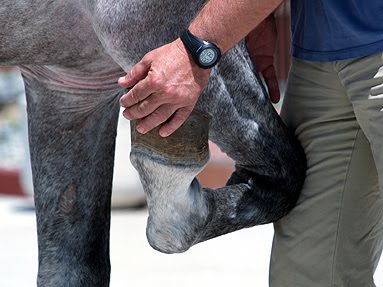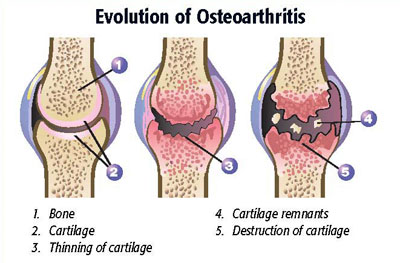In the past couple of years, a whole bunch of new “cellular” therapies have been proposed for the treatment of arthritis, in just about every species for which remuneration can be expected (dogs, cats, horses, people – not so much if you’re a kangaroo or a ibex). Cells are usually harvested from the blood, bone marrow, or fat of horses, and sometimes they are even given in combination, for example, they might be combined with platelet-rich plasma. I did a Google search using words, “cellular therapy arthritis horse” and came up with dozens and dozens of pages. And if that constitutes, “Research,” well, then there you go.
Of course, from a quality standpoint, internet searches are notorious for coming up with all sorts of information. So, for example, while most people believe – based on things like autopsies and such – that Elvis died in 1977 at the young age of 42, there are still thousands f people who are convinced that the King of Rock and Roll faked his death so that he could flip hamburgers and make an honest living (among other theories). Or perhaps he’s still doing on jobs on the grounds of Graceland.
My point, of course, is that Google hits and earnest endorsements do not an excellent therapy make, so it is with no small amount of interest that I see that the New England Journal of Medicine’s “Journal Watch” – which looks over other medical journals and highlights articles of interest – just reported on a systematic review of intra-articular cellular therapies for arthritis reported in the prestigious Journal of Bone and Joint Surgery. And since there sorts of studies haven’t really been done in horses, and since horses are used as a model for human arthrtitis, for those of you that are interested in looking beyond he search bar, I figured I’d bring it to your attention.
The researches looked at the evidence supporting these sorts of therapies. They conducted what’s-known-in-the-trade as a “systematic review,” that is, they looked for as many good, relevant studies as they could find on the topic of cellular therapies for arthritis. Then they look over all of the studies (often including ones that haven’t been published) and summarize the findings. Systematic reviews are a really great way to get a summary of the “state of the art,” as it were.
 So, in spite of the fact that there have been a lot of published papers, they found found six studies that met their search criteria. Now think about that for a second. This stuff has been injected into horses, etc., for several years now, and the researches found all of six studies that were deemed of high enough quality to be included in the review. That tells you something right there: and here’s the something. People have been doing these therapies without the benefit of good evidence that they work. Now that’s not necessarily a bad thing, however, it seems to me that one could make a reasonably persuasive argument that people who are telling other people that they should fork over thousands of dollars for a treatment should at least have some sort of obligation to prove that the treatment actually works, or provides more than just a “promise” of being cutting edged. But I digress.
So, in spite of the fact that there have been a lot of published papers, they found found six studies that met their search criteria. Now think about that for a second. This stuff has been injected into horses, etc., for several years now, and the researches found all of six studies that were deemed of high enough quality to be included in the review. That tells you something right there: and here’s the something. People have been doing these therapies without the benefit of good evidence that they work. Now that’s not necessarily a bad thing, however, it seems to me that one could make a reasonably persuasive argument that people who are telling other people that they should fork over thousands of dollars for a treatment should at least have some sort of obligation to prove that the treatment actually works, or provides more than just a “promise” of being cutting edged. But I digress.
Anyway, the researchers found six trials. Four of those were trials that were included weren’t blinded, that it, people knew who was getting what. One was a prospective study, that is, people were entered into the trial in order to see what would happen (as opposed to looking back to see what did happen), and one was a case-control study involving 300 knees, where half got a cellular intervention. Three of the studies involved patients with osteoarthritis, where the joint cartilage was pretty much falling apart, and three involved patients with “focal cartilage defects,” that is, patients where the joint cartilage in one spot looked dicey, Of course, these are exactly the sort of things that we see in horses, too.
Anyway, after going to all of this trouble – finding studies, reading them, analyzing them – the authors really couldn’t draw any conclusions at all about how well the therapies worked: or even if they worked. That’s because the studies were all over the board in terms of what therapy was chosen, and what was done, and even what constituted a successful treatment outcome. When there were control groups – groups that didn’t receive the treatment, and who were then compared to those that did receive the treatment – both the treated and non-treated groups tended to improve. If you’re one of those folks that wants to put the best possible spin on things, in some (but not all) outcome measures, there were “modestly better” outcomes in those folks that were treated. But it’s hard to know what to say about that because overall, the quality of studies in the field was so bad.
So what do you do? I guess is depends on your point of view. If you’re one of those, “You pays your money and you takes your chances,” kind of folk, you might be inclined to give cellular therapies a shot (pun intended). If you don’t mind the fact that there there’s no clear evidence of any benefit, and you’re happy that you at least have have something to do, well, there you go. If, on the other hand, you’re one of those folks (like me) who’d like to have some good evidence before ponying up a significant number of Benjamins for the treatment of your horse, then you’re probably OK to sit back and wait and spend your money on something else. I mean, you’re going to have to come up with several thousand dollars for some of these therapies, and while money isn’t everything, it’s certainly something.











